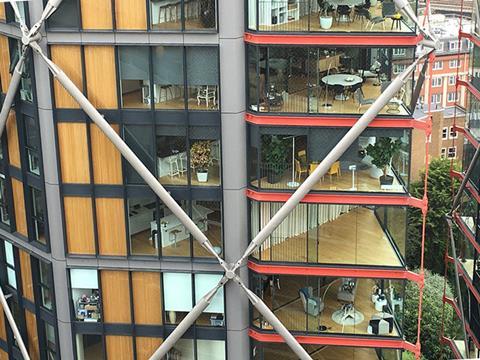Legal battle ends as gallery accepts injunction instead of scrap over damages
Visitors to the Tate Modern’s 10th floor viewing gallery will no longer be able to see into the flats opposite after the gallery agreed to a final order disposing of proceedings.
In February of this year, the Supreme Court found in favour of five residents of RSHP’s Neo Bankside flats, holding that the art museum’s Herzog & de Meuron-designed Blavatnik Building had created “nuisance” by allowing visitors to “snoop” into their luxury apartments.
Owners of the flats, which ranged in price from £2m to £19m, complained the open-air platform gave Tate patrons a direct view into their homes, with one resident saying in court that they had counted 84 gallery visitors photographing their flat in the space of just 90 minutes.
After the Supreme Court’s decision, which overturned a 2019 High Court ruling and a subsequent ruling in the Court of Appeal, proceedings were sent back to the original trial judge in the High Court, Sir Anthony Mann, to determine the appropriate remedy.
The Tate chose not to argue that the court should award damages instead of an injunction, instead agreeing not to operate the 10th floor of the building in a way that would enable visitors to engage in intrusive viewing or photography of neighbouring flats.
Currently, the gallery does this by preventing public access to the parts of the viewing gallery nearest the flats of the five residents.
>> Building study: Herzog & de Meuron’s Blavatnik Building
>> Tate Modern ‘nuisance’ ruling will have wider implications, lawyers say
Natasha Rees, senior partner of law firm Forsters, which represented the five residents, said: “An award of damages was never our clients’ aim and they are grateful for the Tate’s recent willingness, instead, to agree that the viewing platform will not be operated in a way which causes nuisance.
“They are pleased that this long-running dispute has been concluded.”
The Neo Bankside development, which was completed by Carillion in 2012 and shortlisted for the Stirling Prize in 2015, consists of five buildings of six to 24 storeys and includes 217 flats.
Mace’s extension to the Tate Modern, now known as the Blavatnik building after the Ukrainian billionaire, began in 2004 but did not open to the public until 2016




























No comments yet